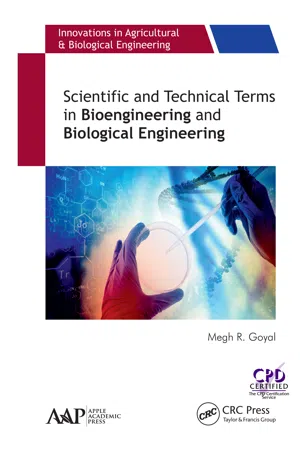Biological Sciences
Aneuploidy
Aneuploidy is a genetic condition characterized by an abnormal number of chromosomes in a cell, often resulting from errors in cell division. This can lead to developmental abnormalities and is associated with conditions such as Down syndrome and Turner syndrome. Aneuploidy can occur in both somatic cells and gametes, impacting the health and viability of an organism.
Written by Perlego with AI-assistance
Related key terms
2 Key excerpts on "Aneuploidy"
- eBook - ePub
- Tom Strachan, Anneke Lucassen(Authors)
- 2022(Publication Date)
- CRC Press(Publisher)
Meiotic nondisjunction and its consequences. In meiotic nondisjunction (NDJ) a pair of homologous chromosomes fail to disjoin and migrate to the same daughter cell, instead of being individually allocated to each daughter cell. That can happen at the second meiotic division (A) or at the first meiotic division (B). The result is that a person produces abnormal gametes, with either no copies of a chromosome (nullisomy) or two copies of a chromosome (disomy). In the latter case, the two chromosome copies may originate from a single parent (for NDJ at meiosis I) or individually from each parent (for NDJ at meiosis I). Fertilization with a normal gamete containing one copy of the chromosome (shown in gray) results in trisomy or monosomy.Tetraploidy (Figure 7.15B ) is much rarer and always lethal. It is usually due to failure to complete the first zygotic division: the DNA has replicated to give a content of 4C, but cell division has not then taken place as normal. Although constitutional polyploidy is rare and lethal, some types of cell are naturally polyploid in all normal individuals—for example, our muscle fibers are formed by recurrent cell fusions that result in multinucleate syncytial cells.Aneuploidy
Normally our nucleated cells have complete chromosome sets (euploidy), but sometimes one or more individual chromosomes are present in an extra copy or are missing (Aneuploidy). In trisomy, three copies of a particular chromo-some are present in an otherwise diploid cell, such as trisomy 21 (47,XX,+21 or 47,XY,+21) in Down syndrome. In monosomy a chromosome is lacking from an otherwise diploid state, as in monosomy X (45,X) in Turner syndrome. Cancer cells often show extreme Aneuploidy, with multiple chromosomal abnormalities.Aneuploid cells arise through two main mechanisms. One is nondisjunction, in which paired chromosomes fail to separate (disjoin) during meiotic anaphase I and migrate to the same daughter cell, or sister chromatids fail to disjoin at either meiosis II or mitosis. Nondisjunction during meiosis produces gametes with either 22 or 24 chromosomes, which after fertilization with a normal gamete produce a trisomic or monosomic zygote (Figure 7.16 - Megh R. Goyal(Author)
- 2018(Publication Date)
- Apple Academic Press(Publisher)
soma , body) refers to the nuclear bodies containing most of the genes largely responsible for the differentiation and activity of the cell, in eukaryotic cells. Each eukaryotic species has a characteristic number of chromosomes. Humans have 46 chromosomes in every cell of their body except the sperm and egg cells. We inherit 23 chromosomes from our mother and 23 from our father.Chromosome aberration refers to an abnormal structure or number of chromosomes; includes deficiency, duplication, inversion, translocation, Aneuploidy, polyploidy, or any other change from the normal pattern.Chromosome banding refers to staining of chromosomes in such a way that light and dark areas occur along the length of the chromosomes in repeatable patterns.Chromosome jumping is a technique that allows two segments of duplex DNA that are separated by thousands of base pairs (about 200 kb) to be cloned together.Chromosome landing is an alternative to chromosome walking for positional cloning.Chromosome mutation
Learn about this page
Index pages curate the most relevant extracts from our library of academic textbooks. They’ve been created using an in-house natural language model (NLM), each adding context and meaning to key research topics.

